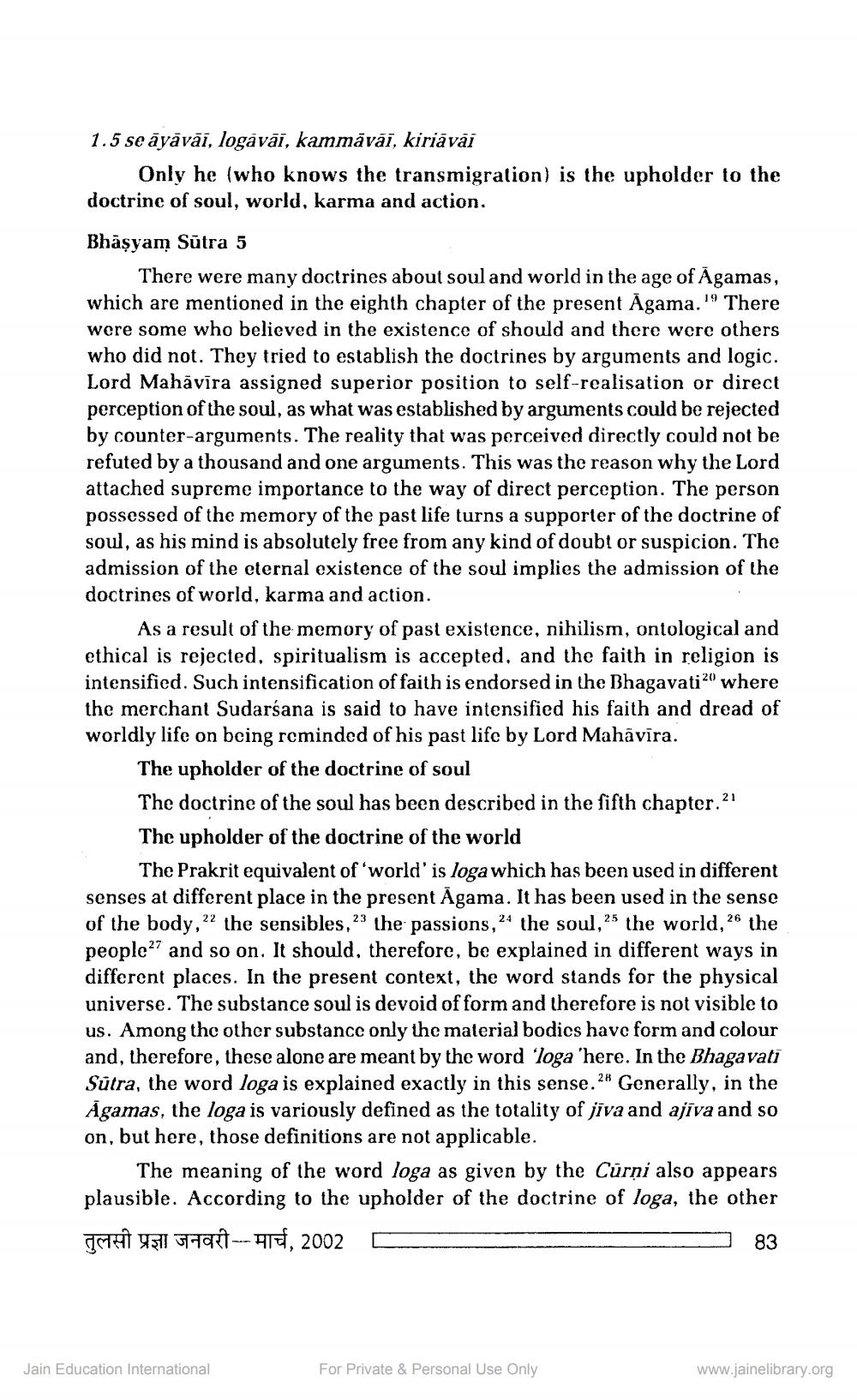________________
1.5 se āyāvāi, logavai, kammāvāi, kiriāvài
Only he (who knows the transmigration) is the upholder to the doctrine of soul, world, karma and action.
Bhagyam Sutra 5
There were many doctrines about soul and world in the age of Agamas, which are mentioned in the eighth chapter of the present Agama.'' There were some who believed in the existence of should and there were others who did not. They tried to establish the doctrines by arguments and logic. Lord Mahāvīra assigned superior position to self-realisation or direct perception of the soul, as what was established by arguments could be rejected by counter-arguments. The reality that was perceived directly could not be refuted by a thousand and one arguments. This was the reason why the Lord attached supreme importance to the way of direct perception. The person possessed of the memory of the past life turns a supporter of the doctrine of soul, as his mind is absolutely free from any kind of doubt or suspicion. The admission of the eternal existence of the soul implies the admission of the doctrines of world, karma and action.
As a result of the memory of past existence, nihilism, ontological and ethical is rejected, spiritualism is accepted, and the faith in religion is intensified. Such intensification of faith is endorsed in the Bhagavati20 where the merchant Sudarsana is said to have intensified his faith and dread of worldly life on being reminded of his past life by Lord Mahāvīra.
The upholder of the doctrine of soul The doctrine of the soul has been described in the fifth chapter 21 The upholder of the doctrine of the world
The Prakrit equivalent of 'world' is loga which has been used in different senses at different place in the present Āgama. It has been used in the sense of the body, 22 the sensibles, 23 the passions,24 the soul,25 the world, 26 the people and so on. It should, therefore, be explained in different ways in different places. In the present context, the word stands for the physical universe. The substance soul is devoid of form and therefore is not visible to us. Among the other substance only the material bodies have form and colour and, therefore, these alone are meant by the word 'loga 'here. In the Bhagavati Sūtra, the word loga is explained exactly in this sense. 24 Generally, in the Āgamas, the loga is variously defined as the totality of jīva and ajīva and so on, but here, those definitions are not applicable.
The meaning of the word loga as given by the Cūrņi also appears plausible. According to the upholder of the doctrine of loga, the other DHE U Hi-FE, 2002
83
Jain Education International
For Private & Personal Use Only
www.jainelibrary.org




